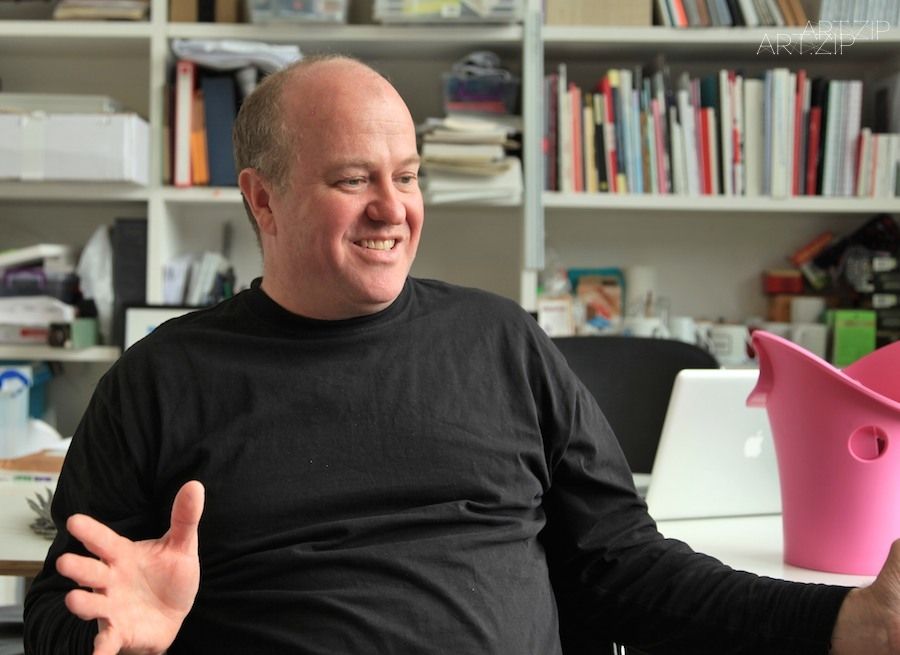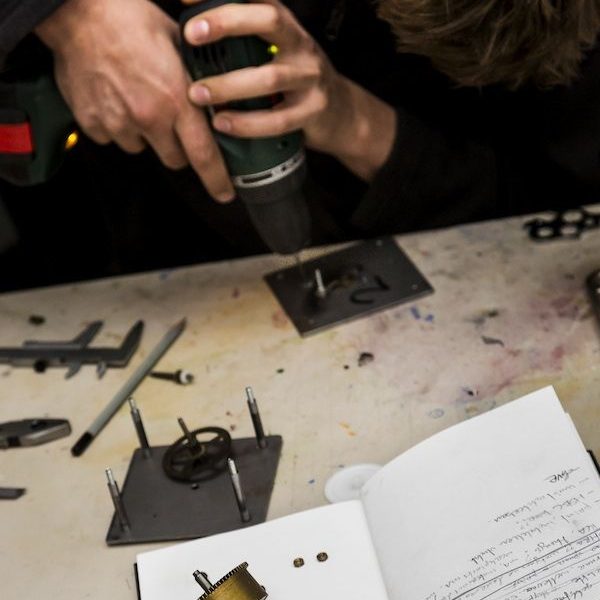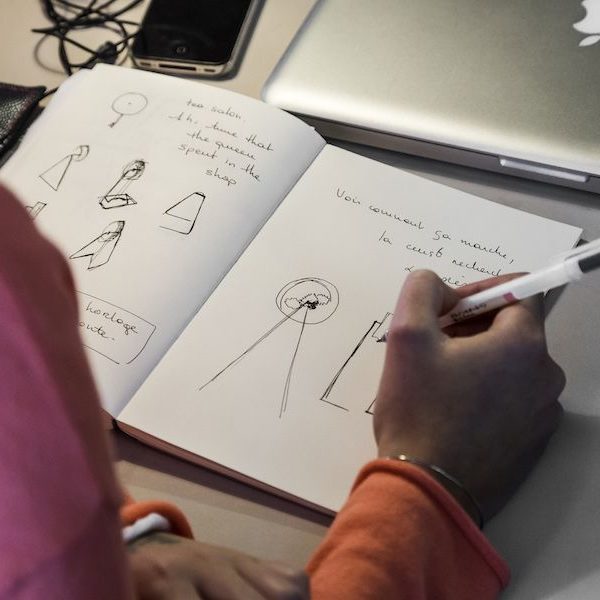
ART.ZIP: Do you have Chinese students? How are they different from other students?
MP: Chinese students have been in a very different educational model, so I think their minds are open in a different way. Here they have great freedom to explore, so that can be quite stressful for them at times. However I think they usually make greater progress than British students. They are very studious, polite and have a completely different outlook on the world. If there’s one thing I love about teaching here it is that my worldview is constantly challenged by my Chinese students, by my Asian students from the other side of the world. Chinese culture has grown up without European and American inflection, to a certain degree. I find it refreshing to speak to my students who have a completely new way of solving problems, a new voice and a new way of seeing.
ART.ZIP: 你們有中國學生嗎?您覺得他們如何?
MP: 中國學生是來自一個完全不同的教學模式,所以他們的思維方式和西方學生有些差別。在這裡,中國學生有很大的自由度來進行自我探索和學習,所以有時候他們感到壓力很大,但是我覺得他們通常都比英國學生獲得更大的進步。他們非常勤奮、有禮貌,而且有著不一樣的世界觀。我喜歡在皇藝教書的一個原因,是我的世界觀經常被來自中國的學生,或其他來自世界另一頭的亞洲學生所顛覆。某種程度來說,中國文化是獨立於歐美體系外的另一種模式。所以每次和我的學生談話,我都會得到一種完全不一樣的解決方案,一種新的聲音和新的看法。
.
.
ART.ZIP: Do you have particular standard when choosing students? What catches your attention?
MP: We don’t have one model of student, because every year we’ve got 40 places. We want a diverse spread of people, engineers, designers and diverse people from different backgrounds and different countries, so it’s a real mix.
One moment we are looking at an engineer, and we try to figure out whether he is a great engineer, whether he’s got creativity; the next one we are looking at is a journalist, and we’re thinking about why they are interested in our world. We are looking for potential, and potential might be a tiny little spark. And somehow we want to say that’s your magic thing, so you fit in there. It’s quite hard choosing people, but the bottom line is talent, curiosity, and passion. We want to know they are full of energy, but it doesn’t mean dancing around the room and shouting. Some people are quiet, but you can feel that they’re driven. Curiosity is important, whatever they do; they might be accountants, but their heads are full of wonder about the world. So we want to see that. And talent: they are not an innovation and design engineer yet, but are they outstandingly good at what they do? If they are, for example if they were biological chemist, are they the best biological chemist in their group? They need to have a raw brilliance. It is not about people finding what they are good at and becoming someone else. It’s about building on who they are. We have a doctor who has just graduated, who illustrates the point about not changing people. He’s got a job at a company that worked with Imperial College designing prototype parts. It’s not just doing it, they are thinking about the future of that business, how design can innovate in that space, and he’s perfect. He’s not the world’s best industrial designer, he’s spent two years at the RCA, and he got the basics, he knows how design works; but he’s a doctor, he’s got more knowledge that about the medical side of it than a designer would ever get in ten years in that field. So who’s better for that job? Him? Or a designer who could draw beautifully and doesn’t know how the blood supply works. He’s a sign of how good of multidisciplinary approach in IDE, and why it’s so important to bring different people in. Because traditional design education can only create one basic model designer, but the world is filling with design and innovation in many different ways and we need different people.
ART.ZIP: 您在挑選學生的時候有什麼特別的標準嗎?什麼樣的學生會特別引起您的注意?
MP: 我們沒有一種特定類型的學生,因為每年我們有四十個名額,而學生都來自不同的地方,擁有不同的專業背景和文化背景。如果我們面對的是一個工程師,我們會考察他是不是一個好的工程師,他是否具備創新能力;如果我們面前是一位記者,我們會看看他為甚麼會對我們感興趣。我們找的是有潛質的學生,那些潛質可能只是一丁點兒,但那是你最迷人的地方,你就適合在這裡。挑選學生總是很難,但我們的底線是有才華的,富有好奇心的和有熱情的。我們需要知道他們是有活力的人,但那不代表在教室裡亂蹦亂叫。有些人很安靜,但是你能感覺他自主性很強。好奇心很重要,無論他們從事的是什麼行業。或許他們是會計師,但他們對世界充滿裡好奇,這點很重要。所以我們需要看到他們這些特質。關於才華,他們或許現在還不是創新設計工程師,但他們現在從事的工作卻完成得很出色。譬如說,他是生物化學家,那我們看的是他是不是同輩之中最好的生物化學家。他們需要有出色的頭腦。我們并不是要把一個人變成另一個人,而是在他們自身的基礎上提高。有一位醫生剛剛從我們這裡畢業,他的例子正好說明了我們并不需要改變一個人。他現在在一家公司任職和帝國理工合作設計醫療器械。他們考慮的不只是製造,他們更多的考慮是未來的產業發展,設計如何帶動產業的發展,這位醫生是最完美的人選。他可能不是世界上最出色的工業設計師,他在皇藝學習了兩年,他有基礎的設計知識,他清楚如何運用設計;但重要的是他是一名醫生,他比一名專業設計師更清楚醫學原理和十年內的醫學發展方向。所以誰更適合這份工作?他?還是一名能畫出完美設計圖但不懂供血原理的設計師呢?他是我們IDE課程很好的跨學科例子,他的案例很好地說明了為甚麼把各類型的人才帶到一起的重要性。因為傳統的設計教育只能培養出一個模式的設計師,但這個世界需要的是各種領域的設計和創新,所以我們需要各式各樣的人才。





